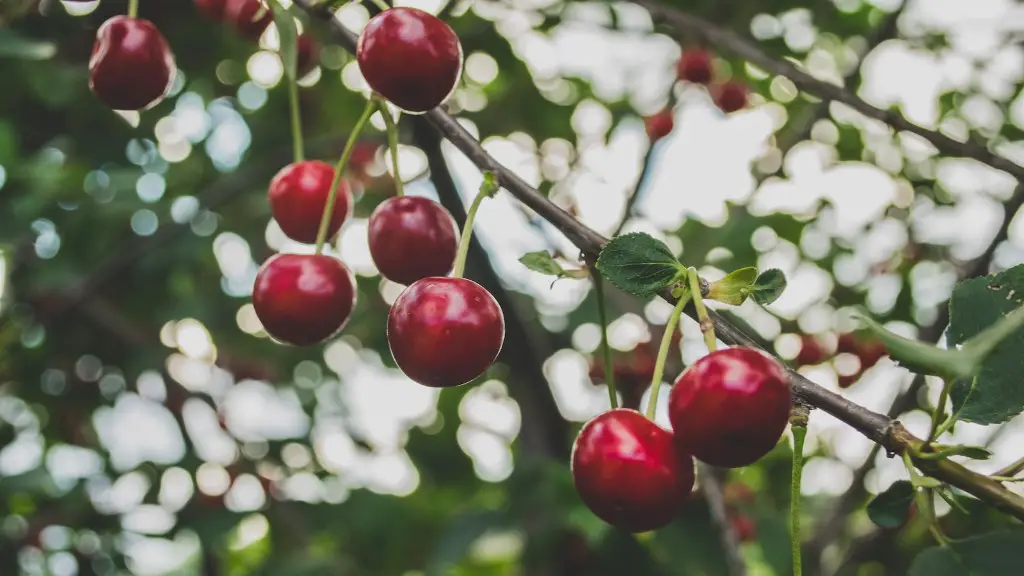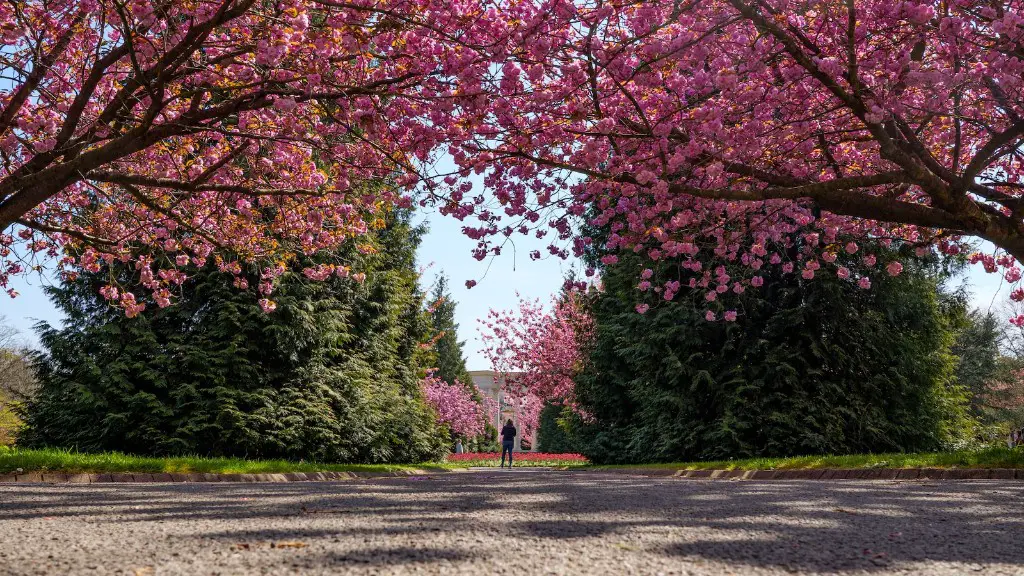Growing a lemon tree that produces juicy and sweet lemons is surprisingly easy. With the right approach and a bit of know-how, anyone can appreciate the considerable benefits that a flourishing lemon tree brings. Here’s how to make a lemon tree produce lemons.
Firstly, it is important to pick a good location with lots of sunlight. Lemons need plenty of direct sunlight in order to bear fruit, so selecting an area that receives sun for most of the day is crucial. Avoid shady spots, as that will likely lead to a low output of lemons.
Secondly, make sure you get the proper soil mix and fertilizers. The soil needs to be light, moist and well drained and the pH should be somewhere between 5.5 and 6.5. To keep the soil healthy and allow for optimal nutrition it is important to use a proper fertilizer, either one especially formulated for lemons or for citrus fruits in general. Make sure to water the tree after fertilizing.
Thirdly, it is important to select the right lemon variety. Different kinds of lemons will grow in different areas, allowing for the flavor and size of lemons to vary considerably between different types. Choose one that is suitable to your climate. Some of the most popular varieties are the Meyer lemon, the Lisbon or the Eureka.
Fourthly, pruning is essential. Pruning helps to remove dead branches and stimulate new growth, aid the development of new fruit-bearing branches and ensure proper air circulation, which is essential in preventing diseases. You don’t need to prune your tree drastically; just remove dead wood or branches that cross each other.
Fifthly, remember to water adequately. As long as the lemon tree is planted in well-drained soil, it does not need a lot of water, especially during the winter. Regular, but infrequent, waterings are important for the tree’s health and for it to bear fruit. It is beneficial to use a drip system for a targeted and efficient watering.
In conclusion, with a little bit of know-how it is possible to grow a lemon tree that produces juicy and delicious lemons. Find the right location, pick the best soil mix and fertilizers and select the most suitable variety for your climate. Prune regularly and make sure you water adequately for the tree to thrive.
Tools Needed
Having the right equipment is essential when it comes to growing a lemon tree. The key equipment needed are: a spade or shovel to prepare the soil, pruning shears, a water hose and nozzle or a drip system.
A spade or shovel are used to dig holes and to use for turning the soil, helping aeration and preparing the right soil mix. With pruning shears, you will be able to snip off dead wood, and also shape your lemon tree as desired. Pruning should be done every spring and fall, so it is important to have the right scissors.
Lastly, a water hose or a drip system is needed for watering. As mentioned, the lemon tree requires regular, but infrequent, waterings. A water hose is ideal for making sure the lemon tree gets the adequate amount of water, as you need to make sure the soil is damp and not saturated, and a hose allows for precisely that.
For more targeted, efficient watering, a drip system is a great tool. With a drip system, you will be able to save water and make sure the lemon tree gets the exact amount of water it needs. It should be placed where the roots tend to extend, and the timer needs to be set accordingly.
Temperature, Wind and Pests
Climate and wind play an important role in the health and productivity of a lemon tree. Lemon trees thrive in warm temperatures, growing best in warmer climates and like temperatures between 65–80 degrees Fahrenheit (18–27 degrees Celsius). If temperatures drop below 55 degrees Fahrenheit (12 degrees Celsius) it might severely damage the tree and it might suffer frost damage.
Wind is especially hazardous for a lemon tree. If placed in areas with strong winds, the lemon tree could suffer from branch breakage, blowing around blossoms and high winds leading to water loss in the soil. Therefore, it is important to place the lemon tree in a sheltered area.
When it comes to pests, preventative treatments are best. These should be done in early spring and late winter, as that is when the tree is more vulnerable. Make sure you select the right type of pesticide and use it correctly. To keep the tree healthy and disease-free, it is important to get familiar with the signs of a possible disease.
Common pest and diseases include the spider mites, white flies, aphids, scab, root knot and other diseases caused by fungus. Symptoms vary depending on the disease or pest and range from discolored leaves to withering or reduced growth. If you note any irregularities in your lemon tree, it is best to consult with a specialist.
Bearing Fruit
A lemon tree requires between 3–4 years to start bearing fruit, depending on the variety. After that, it should start flowering and producing fruit almost every year. For optimal productivity it is important to ensure proper pollination.
Every spring, the lemon tree will flower, and the blossoms need to be pollinated. This can be done by various means, either with the help of a beekeeper, or a garden hose or even with a soft brush. The flowers have a very short lifespan, so make sure they are pollinated while they are in bloom.
In order to prevent crop losses, make sure you thin out fruits that overcrowd the lemon tree. Although it might seem counterintuitive to do this, it is necessary to do it in order for the fruit to develop properly. Start harvesting when the fruits are full-sized, when they are still slightly green, without any bruises and with a slight fragrance.
Fertilizing and Maintenance
Fertilizing and maintenance are important for ensuring the health of your lemon tree and for it to keep bearing fruit. Depending on the soil and on the climate, the tree might require more or less fertilizing. It is important to note that if you over fertilize it, you could burn the tree’s roots, so make sure you get the right mix and use the correct amounts.
Fertilizing should be done twice a year, in the spring and in the fall. For the right fertilizer mix and amounts, refer to labels or to your local specialist. After fertilizing, water your lemon tree with the right amount of water, as mentioned above.
Maintenance is also essential, both physical and chemical. As already mentioned, you need to prune the tree regularly, in order to allow optimal air circulation, to shape your tree and to remove any dead wood. If you leave dead branches on your tree, it could provide shelter to parasites.
When it comes to chemical maintenance, prevention is the key. As discussed above, preventive treatments with pesticides should be done twice a year. Make sure you select the right one for your climate, and store it in a safe, cool place. Make sure to check for pests and diseases, as that will help you to keep your tree healthy and productive over the years.



